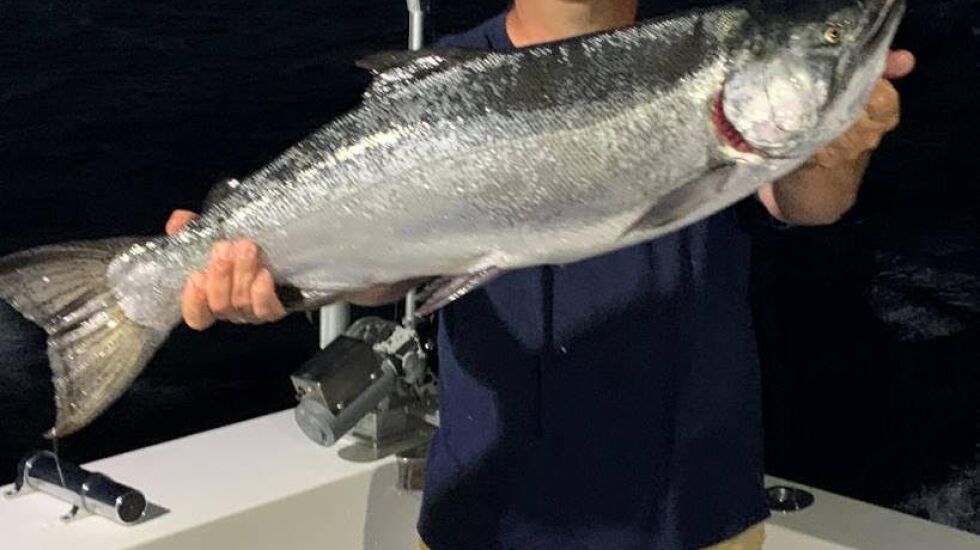
When John Lesnak emailed about catching a 20-pound, 9-ounce coho out of Kenosha, just across the Wisconsin line, the number clicked in my brain: ‘‘That’s the Illinois record.’’
According to Illinois Department of Natural Resources records, Carry VandeVusse caught the Illinois-record coho (20-9) on May 24, 1972, in Lake County.
‘‘I know,’’ Lesnak emailed. ‘‘However, it was six pounds shy of the Wisconsin record. I’m having a replica made.’’
John Gregory caught the Wisconsin-record coho of 26 pounds, 1.9 ounces — a 38-incher — on a charter off Milwaukee on Aug. 22, 1999.
‘‘The size of quality coho off Kenosha now hasn’t been seen for 20-plus years,’’ Lesnak emailed. ‘‘Not uncommon to have five or more over 10 pounds in a six-hour trip.’’
He caught his 20-9 coho the evening of Aug. 16, days after a weekend catch that included two 12-pounders.

Since spring, the captains I talk with weekly on southern Lake Michigan have mentioned the big coho this year.
I checked with Vic Santucci, the Lake Michigan program manager for the IDNR, if data backs that up.
‘‘We are also getting reports of big coho, kings and, of course, pinks this year,’’ he emailed.
But actual data won’t come until the Illinois Natural History Survey ‘‘crunches the angler creel data for this year (usually available next spring) or we complete surveys (September-November) and analyze results from fall harbors electrofishing.’’
By next spring, we might know how historic this coho season was.
Also for history buffs, Lesnak is the son of Capt. Ed Lesnak, now 83, who ran the charter boat Kim III for 35 years out of Waukegan and had headed the Waukegan Charter Boat Association.
‘‘I worked on his and other boats from the time I was 7 until I graduated college,’’ emailed Lesnak, who is back in the area 20 years later with a boat in Kenosha.
† A history question: I wonder whether the Illinois-record coho actually was caught by Garry VandeVusse. If you can help, let me know.
Duck estimates
Duck numbers in the 2022 Waterfowl Population Status dropped 12% from 2019 and 4% from the long-term average (since 1955), according to Ducks Unlimited. The survey, conducted by the U.S. Fish and Wildlife Service, Canadian Wildlife Service and others, was the first since 2019 because of COVID restrictions.
Bright spots were redheads (up 35%) and blue-winged teal (up 19%). Mallards dropped 23%.
Wild things
Sharp-eyed readers correctly noted the Wild of the Week on Saturday was a green heron, not a least bittern. . . . Friend John Vukmirovich emailed about not seeing any nighthawks yet. Nor have I — neither flying overhead, nor mentioned or spotted in the lights at night when watching the White Sox.
Stray cast
Burying a hook past the barb is something you only should do once, then learn from it. Same goes for an intentional walk on a 1-2 count.







